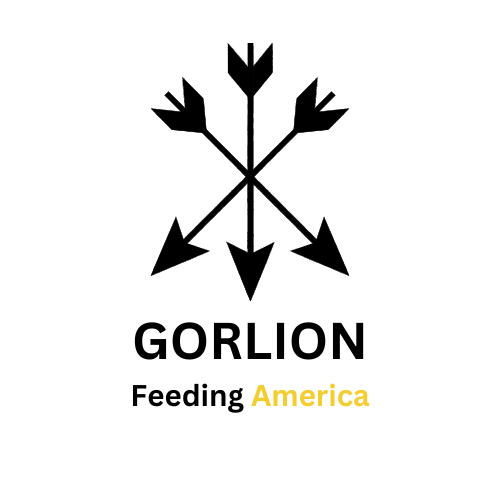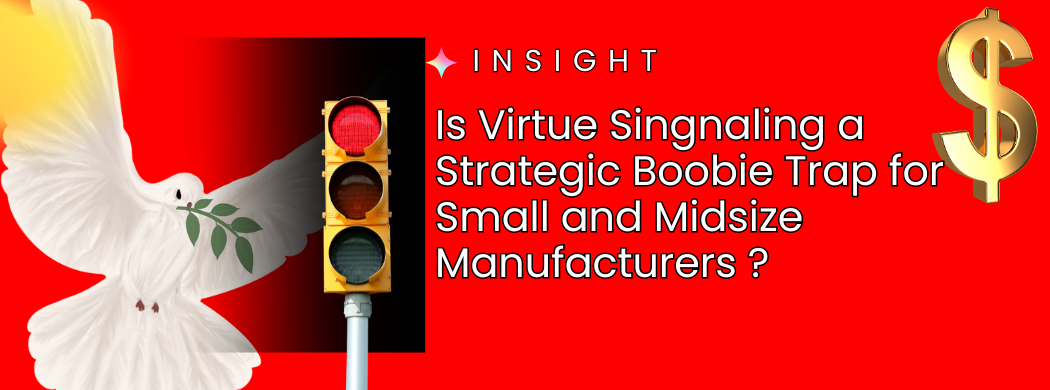In the high-stakes world of global manufacturing, where the pursuit of virtue often collides with the unrelenting thirst for profit, small and midsize manufacturers stand at a crossroads. In an era where large corporations brandish their values as a shield, it’s imperative for smaller players to tread cautiously, understanding that survival and success hinge on a strategic fusion of virtue and profit. This opinion editorial serves as a roadmap for small and midsize manufacturers, navigating the intricacies of an industry where the giants virtue signal while fiercely safeguarding their market share. The call is bold: embrace a strategic blueprint that acknowledges the realities of the battlefield and ensures not just survival but triumph.
I. The Virtue Paradox: A Warning Against the Illusion
In recent times, the business landscape has witnessed the rise of virtue signaling on a grand scale. Large corporations, often hailed as bastions of morality, proudly showcase their values and commitments. They champion sustainability, diversity, and social responsibility. Yet, amidst the grandeur of these declarations, a paradox emerges.
A. The Profit-Driven Undercurrent:
- Reality Check: While large corporations eloquently pronounce their values, behind the scenes, they are ruthlessly profit-driven. Market share is their holy grail, and they employ strategic maneuvers, price wars, and calculated attacks to maintain and expand their dominance.
B. Virtue as a Smokescreen:
- Reality Check: Virtue signaling often serves as a smokescreen, concealing the cutthroat tactics employed by industry giants. Small and midsize manufacturers must not be swayed by the façade; instead, they should recognize the dual nature of these corporate behemoths.
II. The Profit Imperative: The Unyielding Reality
In the world of business, survival hinges on profits. Small and midsize manufacturers must internalize this reality, understanding that the virtuous narratives spun by large corporations coexist with an unwavering commitment to profit margins.
A. The Business Growth Conundrum:
- Reality Check: For a business to grow and thrive, profits are non-negotiable. Small and midsize manufacturers must disentangle themselves from the illusion that growth can be sustained without a relentless focus on the bottom line.
B. Market Share: The Holy Grail:
- Reality Check: Market share is the heartbeat of industry giants. They navigate the competitive landscape with a single-minded focus on securing and expanding their share. Small and midsize manufacturers must adopt a similar mindset to navigate the unforgiving terrain.
C. Sharks in Sheep’s Clothing:
- Reality Check: Beneath the veneer of virtue, large corporations are sharks, fiercely territorial and opportunistic. Small and midsize manufacturers should recognize that survival demands adopting a similarly assertive stance in the pursuit of market share.
III. A Blueprint for Small and Midsize Manufacturers: Navigating Virtue and Profit
A. The Dual Strategy:
- Strategic Virtue: Small and midsize manufacturers should embrace strategic virtue. This involves integrating ethical practices, sustainability, and social responsibility into their operations. Authentic virtue, not mere signaling, builds long-term trust with consumers.
- Profit-Centric Approach: Concurrently, a profit-centric approach is paramount. Small and midsize manufacturers must operate with the understanding that profits fuel growth, innovation, and resilience in the face of market challenges.
B. The Market Entry Dilemma:
- Market Research: Before entering new markets, thorough research is indispensable. Understanding local nuances, regulatory landscapes, and consumer behaviors is essential to avoid costly missteps.
- Strategic Positioning: Small and midsize manufacturers should strategically position themselves, leveraging unique strengths to differentiate from competitors. Success in new markets demands a calculated and well-thought-out entry strategy.
- Risk Mitigation: Recognizing the potential costs of missteps, a robust risk mitigation plan should be in place. This involves anticipating challenges and having contingency measures to navigate unforeseen hurdles.
C. Protecting Current Market Share:
- Innovation as Defense: Continuous innovation is a defensive strategy against consumer fickleness and the silent erosion of market share. Small and midsize manufacturers should invest in product development to stay ahead of competitors.
- Strategic Pricing: Engaging in price wars can erode profit margins. A strategic pricing model that balances competitiveness with profitability is essential for maintaining market share.
- Vigilant Defense: Acknowledging the challenger’s advantage, small and midsize manufacturers must proactively assess vulnerabilities and fortify their positions. A vigilant defense strategy is crucial in countering calculated attacks from new entrants.
IV. The Gorlion Advantage: Guiding Small and Midsize Manufacturers to Triumph
A. Battle-Hardened Expertise:
- Strategic Partnership: Gorlion emerges not merely as a supplier but as a strategic partner. Their battle-hardened expertise equips small and midsize manufacturers with insights to protect market share and navigate new market entries effectively.
B. Tactical Market Insights:
- Proactive Fortification: Gorlion provides tactical insights, helping manufacturers anticipate challenges and proactively fortify their positions. This ensures a strategic defense against calculated attacks in the ever-evolving industry landscape.
C. Global Reach, Local Sensibilities:
- Holistic Industry Impact: Gorlion’s global reach, paired with an acute understanding of local sensibilities, contributes to a more equitable industry landscape. Small and midsize manufacturers can leverage this global-local balance for sustained growth.
D. Cost-Effective Strategies:
- Balancing Profit and Sustainability: Gorlion guides manufacturers with cost-effective strategies that align with both profitability and sustainability. This ensures market protection and entry without jeopardizing long-term financial stability.
V. Conclusion: A Resolute Call to Action
In the turbulent seas of the global food and beverage industry, small and midsize manufacturers must navigate with clarity, acknowledging the dual nature of virtue and profit. The blueprint for success demands a strategic fusion of ethical practices, sustainability, and a relentless pursuit of profits.
by large corporations should not serve as a distraction but as a reminder that beneath the surface lies an unyielding commitment to market dominance. Small and midsize manufacturers must embrace this reality, understanding that survival and triumph require a dual strategy that navigates both virtue and profit.
In entering new markets, meticulous research and strategic positioning become their weapons of choice. The battleground demands a proactive defense against the challenger’s advantage and a robust risk mitigation plan to weather unforeseen storms. The commitment to protecting current market share involves continuous innovation, strategic pricing, and a vigilant defense against silent erosion.
Gorlion emerges as a beacon of guidance in this tumultuous journey. Their battle-hardened expertise, tactical market insights, global reach with local sensibilities, and commitment to cost-effective strategies position them not just as suppliers but as strategic allies. Small and midsize manufacturers can leverage Gorlion’s support to fortify their positions, navigate new market entries, and ensure a balance between profitability and sustainability.
The Resolute Call to Action:
- Embrace Strategic Virtue: Small and midsize manufacturers should integrate authentic virtue into their operations, building trust with consumers and fostering long-term relationships.
- Adopt a Profit-Centric Approach: Acknowledge that profits are the lifeblood of growth. Operate with a relentless focus on the bottom line while navigating the complexities of the industry.
- Navigate New Markets Strategically: Conduct thorough market research, strategically position your brand, and implement robust risk mitigation plans before entering new markets.
- Protect Current Market Share Vigilantly: Innovate continuously, employ strategic pricing models, and maintain a vigilant defense to safeguard against the erosion of market share.
- Leverage Gorlion’s Guidance: Forge a strategic partnership with Gorlion to benefit from their battle-hardened expertise, tactical insights, global reach, and commitment to cost-effective strategies.
In the pursuit of virtue and profit, small and midsize manufacturers are not merely participants; they are architects of their destinies. The blueprint outlined here is not just a guide; it is a resolute call to action. The global stage is unforgiving, and only those who navigate with boldness, strategic clarity, and an unwavering commitment to both virtue and profit will emerge not just as survivors but as triumphant leaders in the complex realm of the food and beverage industry.

